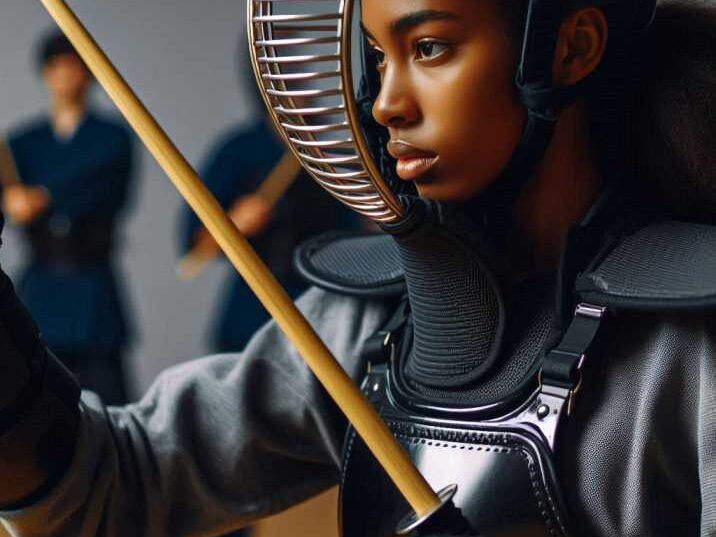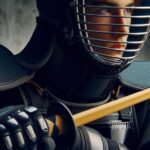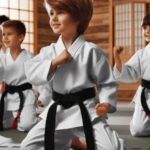Introduction
Table of Contents
Kendo, which means “the way of the sword,” is a traditional Japanese martial art that focuses on sword fighting. It blends the spirit of Samurai swordsmanship with modern principles of self-discipline and concentration. The training requires not just physical strength but also mental sharpness, which helps improve focus not just in martial arts but also in everyday tasks like schoolwork and other activities. This article will explore Kendo meaning, how training works, and why it’s an excellent tool for learning concentration and discipline.

What Does Kendo Mean?
The word “Kendo” is a combination of two Japanese words: “ken” (sword) and “do” (the way). Together, Kendo translates to “the way of the sword.” It represents a martial art rooted in the Samurai tradition, Japan’s ancient warriors. In Kendo, practitioners, known as “Kendoka,” learn to use a bamboo sword, called a shinai, in a safe and controlled manner. Beyond sword fighting, Kendo teaches important life values like respect, self-discipline, and focus.
The Philosophy Behind Kendo
Kendo is not just about fighting techniques. It is also about honing one’s mental sharpness and character. It teaches its practitioners the importance of patience, determination, and inner strength. These qualities are crucial for Kendo’s practice and everyday life, helping students stay focused and disciplined, whether at school or in sports.
How is Kendo Practiced?
Kendo involves training with a bamboo sword (shinai) while wearing protective armour called bogu. The armour is designed to cover specific parts of the body like the head, torso, and wrists. The practice sessions, known as Keiko, involve sparring with partners, performing kata (form practice), and refining basic techniques called suburi.
Essential Kendo Equipment
- Shinai: A bamboo sword used in practice.
- Bogu: Protective armour including a helmet (men), gloves (kote), chest protector (do), and hip protector (tare).
- Hakama: Wide-legged pants traditionally worn during practice.
Training is intense, but it requires full concentration and precise movements, which makes it a mental workout as much as a physical one. By focusing on the moves, students learn to tune out distractions, leading to improved focus in other parts of life, like school and sports.
Benefits of Kendo Training
Kendo training provides a variety of physical, mental, and emotional benefits. Here are some of the key benefits:
Physical Benefits
- Increased Stamina: Kendo training involves a lot of movement, which helps build endurance and strength.
- Improved Reflexes: The fast-paced nature of the practice helps improve hand-eye coordination and reaction times.
- Better Posture: Kendo emphasizes a strong, upright posture, which is helpful for overall body health.
Mental Benefits
- Enhanced Focus: Kendo training requires complete attention, which helps improve focus and concentration.
- Discipline: Practitioners learn the value of self-discipline through strict practice routines.
- Stress Relief: Practicing Kendo helps release stress by allowing the mind to focus on the present moment.
Emotional Benefits
- Self-Confidence: Overcoming challenges in Kendo practice builds self-esteem.
- Respect: Students are taught to respect their instructors, fellow students, and the art of Kendo itself.
- Patience: Learning Kendo is a gradual process, which fosters patience and persistence.
How Kendo Improves Focus
One of the most important skills developed through Kendo is focus. Because each movement in Kendo requires precise timing and execution, students must be fully present in their training. This increased focus can transfer to other areas of life, like schoolwork. Students who practice Kendo often report improvements in their ability to concentrate on tasks for longer periods without getting distracted.
The Importance of Discipline in Kendo
Kendo teaches practitioners how to maintain a strong sense of discipline. This discipline comes from adhering to the rules of the dojo (training hall), respecting one’s opponents, and consistently practising to improve skills. The lessons learned in Kendo carry over into daily life, teaching students how to stay disciplined in their studies and other responsibilities.
How Discipline and Focus Help in School
For students, learning discipline and focus through Kendo can lead to improved performance in school. Kendo teaches the importance of listening, following instructions, and persisting even when tasks are difficult. These skills are vital in a classroom setting, where students need to focus on their lessons and complete assignments with discipline.
Kendo Training for Children
Kendo is a great martial art for children because it teaches them physical skills and important life lessons. In Kendo, children learn the importance of respect, teamwork, and sportsmanship. They also develop confidence as they see their skills improve with practice.
How Kendo Differs from Other Martial Arts
While many martial arts focus on hand-to-hand combat, Kendo is unique in its use of weapons, specifically the shinai. It also places a heavy emphasis on mental focus and respect for tradition. Unlike some martial arts that rely on brute force, Kendo focuses on the balance between body and mind.
Table of Information: Kendo vs. Other Martial Arts
| Aspect | Kendo | Karate | Judo |
|---|---|---|---|
| Focus | Swordsmanship & Mental Focus | Striking Techniques | Grappling & Throws |
| Weapons Used | Bamboo Sword (Shinai) | None | None |
| Protective Gear | Full Armor (Bogu) | Light Gear (Mouthguard) | None |
| Training Style | Sparring & Kata | Strikes & Kicks | Throws & Takedowns |
| Philosophy | Discipline & Concentration | Strength & Agility | Balance & Technique |
Conclusion
Kendo is more than just a martial art; it is a journey toward self-improvement. By teaching the importance of focus, discipline, and respect, Kendo helps practitioners grow mentally and physically. For students, it’s a great way to develop skills that can help them succeed in school and other activities. Whether you are drawn to the exciting swordplay or the deep traditions, Kendo offers something for everyone who seeks to improve themselves.
FAQs
- What does Kendo mean?
Kendo means “the way of the sword,” and it is a Japanese martial art focused on swordsmanship. - What equipment do you need for Kendo?
Kendo practitioners use a bamboo sword (shinai) and wear protective armour (bogu) during training. - How does Kendo improve focus?
Kendo requires full concentration, which helps improve a person’s ability to focus on tasks in everyday life. - Is Kendo suitable for children?
Yes, Kendo is great for children as it teaches respect, discipline, and physical coordination. - What is the difference between Kendo and Karate?
Kendo focuses on sword fighting with weapons, while Karate focuses on hand-to-hand combat without weapons.


